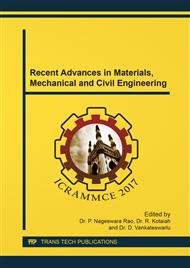p.341
p.347
p.354
p.360
p.366
p.372
p.378
p.384
p.391
Lattice Boltzmann Simulation of Transient Natural Convection in a Staggered Cavity with Four Vertically Heated Walls
Abstract:
The work in this manuscript deals with the numerical simulation of natural convection in a staggered cavity with the help of a recently developed two-dimensional double Multiple-Relaxation-Time (MRT) thermal Lattice Boltzmann method (LBM). In the last decade, there has been a rapid rise in the development of Lattice Boltzmann methods. However, its application in the simulation of natural convection from a staggered cavity has been carried out for the first time in this study. A careful undermining into the existing literature of heat and mass transfer reveal that study of natural convections in cross-sectional cavities is notably absent. Therefore, in this manuscript, we attempt to review the recently developed method and tried to analyze its implementation on natural convection in a staggered cavity with four differentially heated vertical walls. The problem geometry has eight boundaries. It is a staggered cavity with adiabatic horizontal walls and differentially heated vertical walls. The flow inside the thermally driven staggered cavity has been carefully studied for Rayleigh numbers 103, 104 and 105. The velocity and pressure boundary conditions are determined by a non-equilibrium extrapolation rule. As no benchmark results are available in the literature for this relatively new problem, we carry out its simulation with the help of a yet another well established scheme. This scheme is a higher-order compact (HOC) scheme with fourth order spatial accuracy and second order temporal accuracy. Our results show that there is a very good agreement between both these methods which exemplifies the accuracy and credibility of our results.
Info:
Periodical:
Pages:
366-371
Citation:
Online since:
February 2018
Authors:
Price:
Сopyright:
© 2018 Trans Tech Publications Ltd. All Rights Reserved
Share:
Citation:


